April's shack day featured several members working on projects, showing off projects, discussing plans, sharing ideas & books, and eating sausages of course!
Darryl brought along his recently-completed ATU. Whilst it may not be sufficient to handle Graham's monster amplifier it's nicely built and means Darryl can get on the air with plenty of power and any sort of antenna.
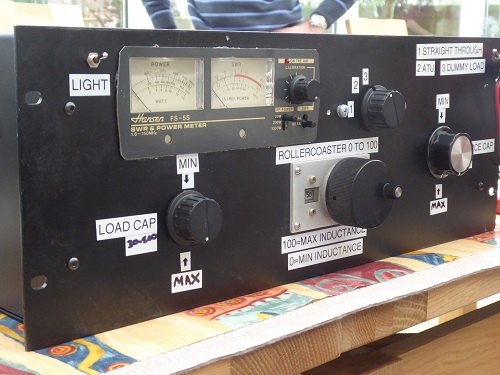
The ATU integrates a commercial SWR & power meter and a connection for a dummy load.
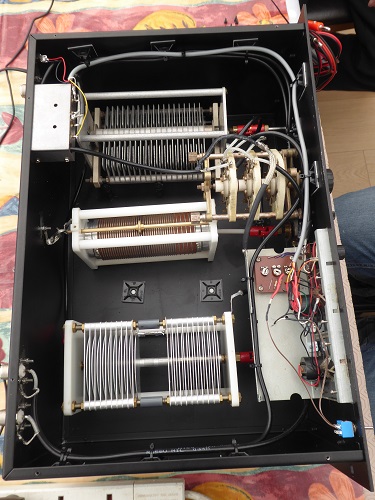
Meanwhile, Gary was experimenting with twin-T audio oscillators in order to build some nice-sounding practice oscillators for use with Morse keys at JOTA.
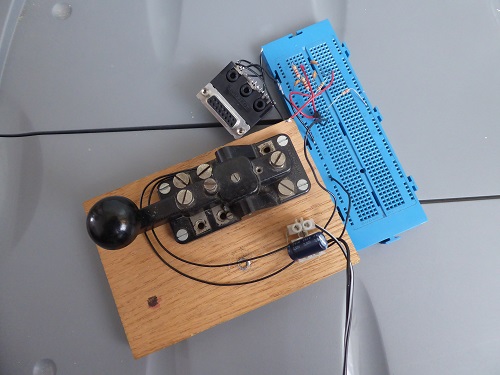
Martin had programmed an Arduino Nano with Gary's iambic keyer sketch. It worked well with his Hi-Mound key but does need a modification to stop it producing a side tone from power-up until the key is operated.
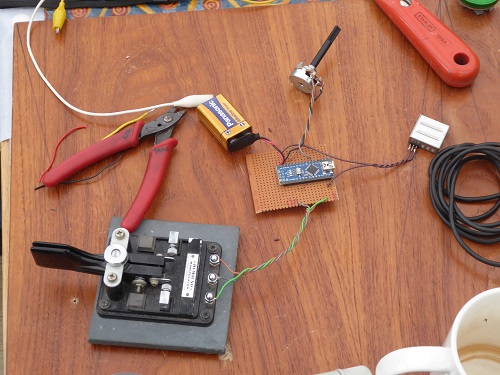
In addition to these projects, Mike had some Arduino keyers that he had built and there were a number of books and components shared around. Martin suggested that books are added to the Club Kit list if members are willing to loan them out. Also a list of components and 'junk' that is available for members to use on projects should be added to the website.
There were also a couple of rotators and control boxes to be sorted out. First up was an AR22R which had an un-earthed metal case to the control unit. Clearly people were less susceptible to electric shocks in the 70's! Bob's mains voltage detector got quite excited as soon as it got within about 10cm of the case, so clearly something was amiss.
Mike managed to find a circuit diagram and manual (available at the Boat Anchor Manual Archive) and Gary set about figuring out what was what. According to the manual's circuit diagram the secondary of the transformer is earthed, and it is connected to the case. But with only a two-core mains cable there is no safety earth in the event of a failure in the transformer insulation!
Mike supplied a spare 3-core mains cable and Gary re-wired the controller. A quick test showed that the rotator and controller work happily together and the rotator sounds like it is in good condition mechanically. We now have a rotator for the 2-element HF beam!
The second rotator controller was a BT-1a, about which there is virtually no information available online. The conclusion is that it looks OK but requires a rotator with a feedback potentiometer.
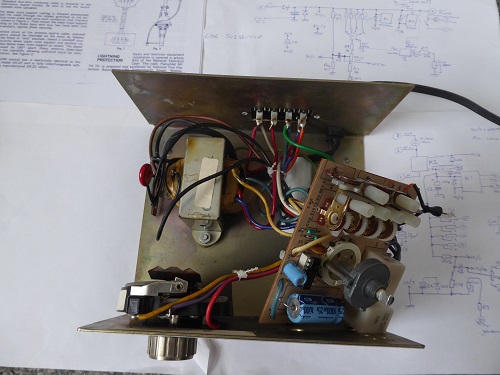
The picture shows the insides of the BT-1a.
Everyone had a great day. Thanks to Mike and family for putting up with us all!